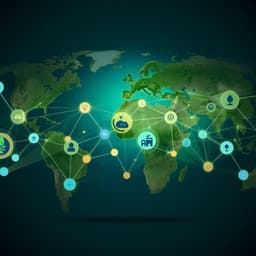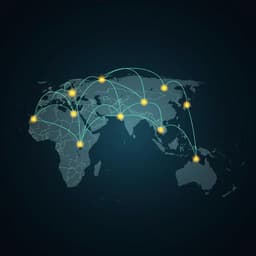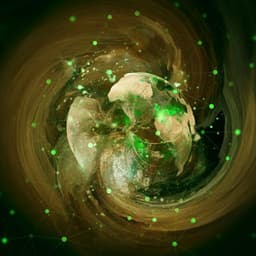
Food Science and Technology
Effect of trade on global aquatic food consumption patterns
K. Zhao, S. D. Gaines, et al.
Discover the dynamics of global aquatic food consumption and trade, revealing how aquaculture has reshaped dietary habits and trophic levels across 174 countries. This research conducted by Kangshun Zhao, Steven D Gaines, Jorge García Molinos, Min Zhang, and Jun Xu emphasizes the potential for a fairer distribution of aquatic food worldwide.
Playback language: English
Introduction
The Sustainable Development Goals (SDGs) prioritize food security and eliminating malnutrition. Aquatic foods, encompassing fish, cephalopods, and crustaceans, play a crucial role in achieving these goals. Global fisheries and aquaculture production have expanded substantially, making aquatic foods among the most highly traded commodities. These foods offer essential nutrients and improve human health. However, challenges like climate change, overfishing, pollution, and coastal development threaten the ocean's capacity to meet growing demands. While aquaculture is seen as key to meeting future demand, the geographic variability of production highlights the crucial role of trade in redistributing aquatic products. Existing research on aquatic food trade and consumption provides insights into general characteristics, but a comprehensive understanding of aquatic food globalization is limited by a lack of detailed, reconciled production and trade data. This study addresses this gap by developing a species-level mass balance dataset and trophic level identification dataset to analyze global aquatic food consumption patterns, trade characteristics, and the impact of trade on these patterns from 1976 to 2019. The trophic level, a key metric in ecology, represents a species' position in the food chain and is used here as an indicator of both environmental impact and economic value. Though higher trophic levels generally correlate with higher price, they do not directly reflect nutrient content or contaminant levels. This research aims to quantitatively assess the human aquatic food trophic level (HATL) and the influence of trade on it.
Literature Review
Previous studies have explored general aquatic food trade and consumption characteristics and regional trade impacts. However, a comprehensive understanding of global aquatic food consumption patterns and trade impacts remains limited due to challenges in reconciling species versus product-level reporting and accounting for weight losses during processing. Compared to land-based food systems, insights into global aquatic food systems lag significantly. Existing research demonstrates the importance of trade in global food systems, but detailed analysis of the role of trade in aquatic food systems has been lacking. This study directly addresses this gap, providing a more comprehensive analysis of the role of aquatic food trade in shaping global consumption patterns.
Methodology
This study utilized FAO national fisheries and aquaculture production and trade data (1979–2019) to create species-level mass balance and trophic level identification datasets for 174 countries. Data preprocessing involved removing items with negligible volume (<100t) from aquaculture, capture, and trade datasets. Live weight conversion factors were applied to trade data to convert processed product weight to whole-animal live weight equivalents, using factors from existing literature. Trophic levels were determined for each species or species group using Fishbase (www.fishbase.org). Where species-level data were unavailable, weighted averages based on production data were used. The human aquatic food trophic level (HATL) was calculated as the quantity-weighted average of trophic levels of consumed species. A species-level mass balance was performed, subtracting export weights from production in four steps to estimate apparent consumption per commodity group in each country. This involved matching re-exported commodities with imported commodities, and unmatched commodities were matched with country-specific generic items. The methodology addresses potential underestimation of re-exports by combining aquaculture, capture, and remaining imports data to subtract exports. Rationality analysis was conducted by comparing theoretical exports and re-exports to original data to assess the accuracy of the mass balance. Finally, the impact of trade on per capita consumption and HATL was analyzed by comparing 'before trade' and 'after trade' values.
Key Findings
From 1976 to 2019, global per capita aquatic food consumption increased significantly, but the HATL declined from 3.42 to 3.18. This decline is attributed to the rapid growth of aquaculture, which has a significantly lower average trophic level than capture fisheries. Global aquaculture trophic level is nearly 0.8 lower than that of capture fisheries. While capture fisheries production saw marginal growth, aquaculture output increased rapidly, particularly in Asia. The proportion of aquatic foods from aquaculture rose from 6% in the 1960s to 56% in 2020. Regional trends varied: Asia showed rapid consumption increases and HATL decreases, while Europe and South America experienced initial rapid growth followed by declines in consumption and increases in HATL. North America saw slight consumption increases and HATL decreases, and Oceania showed increases in both. International trade in aquatic foods increased across all continents, particularly in Asia and Europe. Asia and South America were major trade surplus regions, while Africa and North America were deficit regions. The trophic level of continental trade was generally above 3.3, indicating that most exported products are high-trophic level species. Asia and South America's aquatic food import trophic levels surpassed export levels, showing a shift in demand towards higher-value species. Analysis of 'before trade' and 'after trade' values revealed that most countries experienced increased per capita consumption and HATL after trade, particularly in Africa and Europe. Trade reduced global HATL heterogeneity, indicating a harmonizing effect on global aquatic food consumption.
Discussion
This study's findings demonstrate that while global aquatic food consumption is increasing, the trophic level is declining, primarily due to the rise of aquaculture. However, international trade has played a crucial role in increasing aquatic food availability and trophic levels in most countries, reducing geographic disparities. The observed trends suggest that trade facilitates access to a greater quantity and higher quality of aquatic foods, enhancing food security. However, the benefits of trade are not evenly distributed, with high-income groups tending to benefit more as most exported products are high-trophic level, high-value species. Further research is needed to understand the specific impacts of trade on vulnerable populations and to develop equitable trade policies that ensure broader societal benefits. The study also highlights the need to consider the limitations of aquaculture in terms of trophic level and the potential for environmental impacts, as well as the need to account for food loss and waste in any comprehensive analysis of aquatic food systems.
Conclusion
This study provides a comprehensive analysis of global aquatic food consumption patterns and the impacts of trade. The findings highlight the intertwined roles of aquaculture and trade in shaping global aquatic food consumption, indicating that while aquaculture contributes to increased consumption of lower-trophic-level species, trade plays a key role in increasing the availability and trophic levels of aquatic foods globally, especially in regions like Africa. Future research should focus on developing more equitable trade policies and understanding the impacts of trade on vulnerable populations to ensure that the benefits of aquatic food globalization are more widely shared. Further research should also focus on the environmental sustainability of aquaculture and trade to minimize negative impacts on marine ecosystems.
Limitations
This study acknowledges limitations due to data inconsistencies and the complexity of reconciling species-level production and trade data. Weight losses during processing and the challenge of accurately representing re-exports can introduce uncertainty. The study focuses on fish, cephalopods, and crustaceans, excluding mollusks and aquatic plants, which could affect the overall HATL estimates. Additionally, the study did not account for differences between the wild trophic level of farmed species and their actual trophic level based on feed composition, nor did it fully account for variations in live weight conversion factors across time and regions. Despite these limitations, the study's large-scale analysis provides valuable insights into global aquatic food consumption and the role of trade.
Related Publications
Explore these studies to deepen your understanding of the subject.







